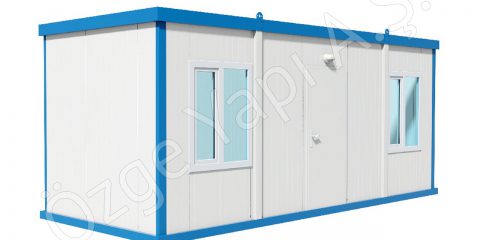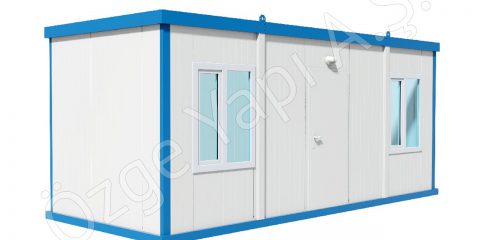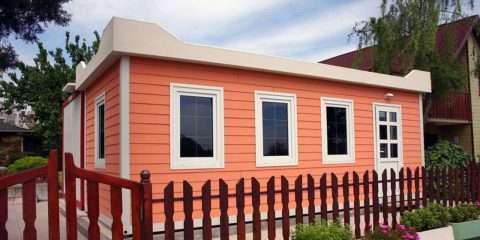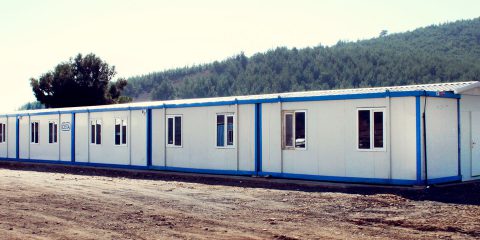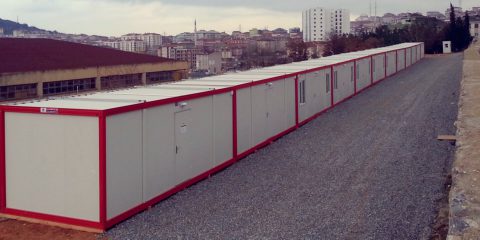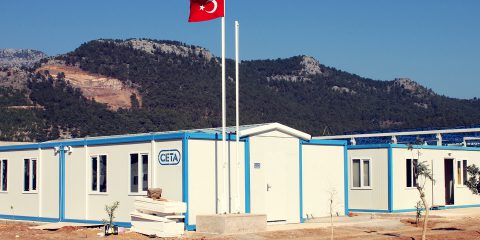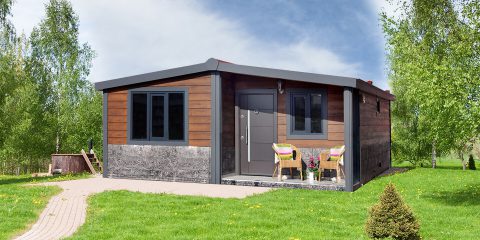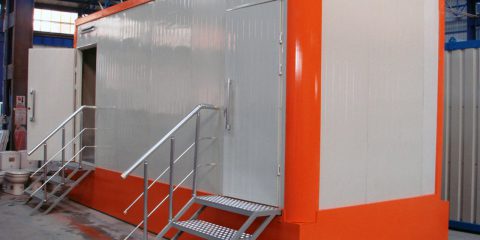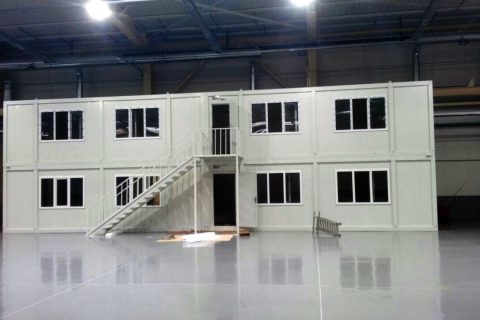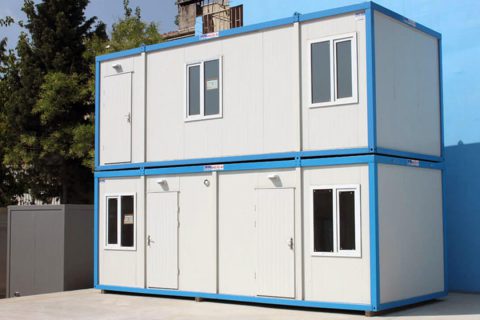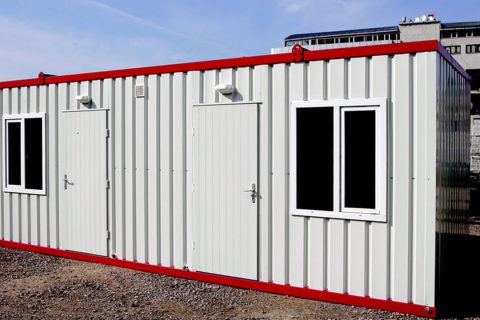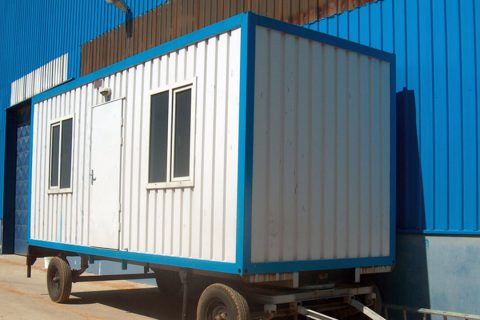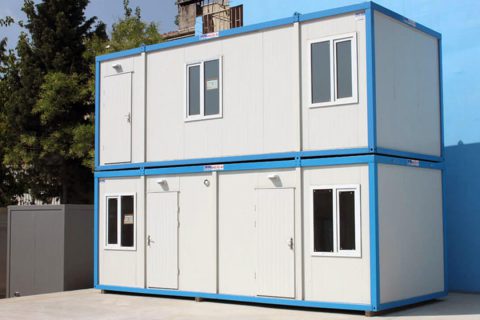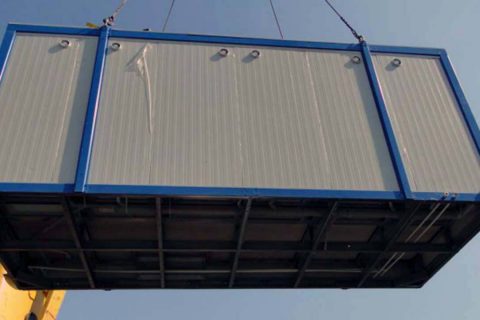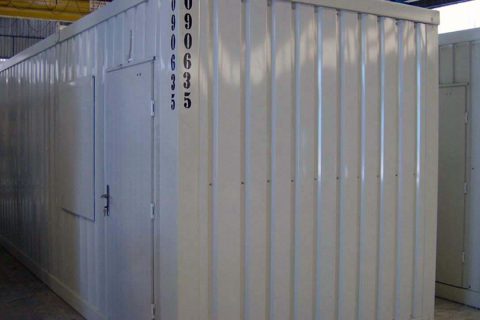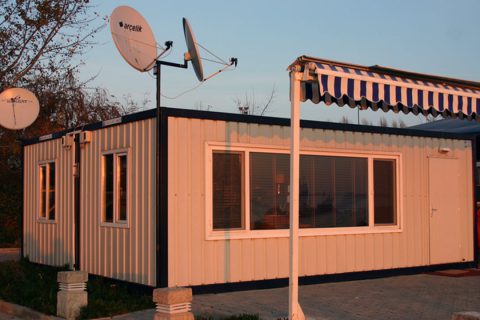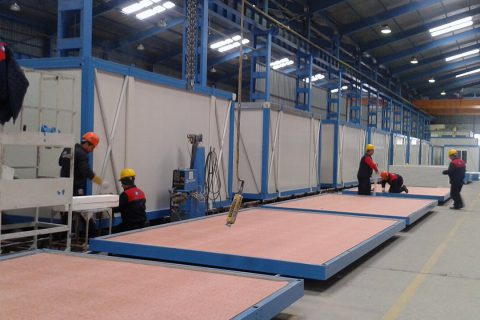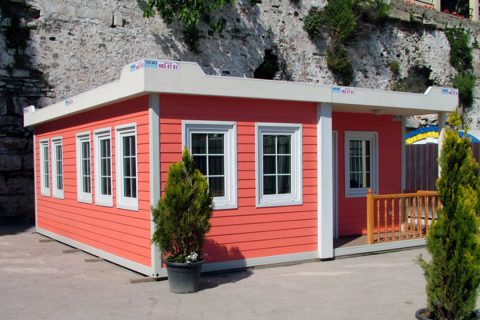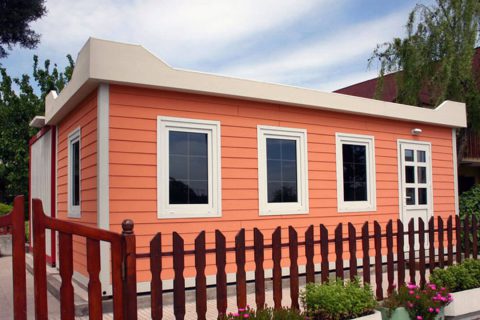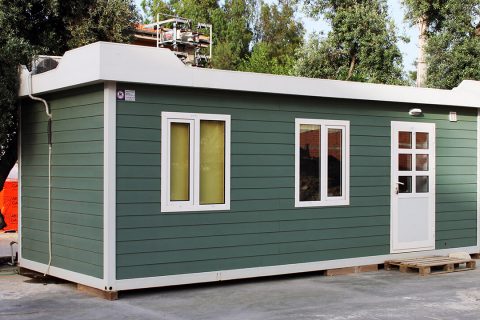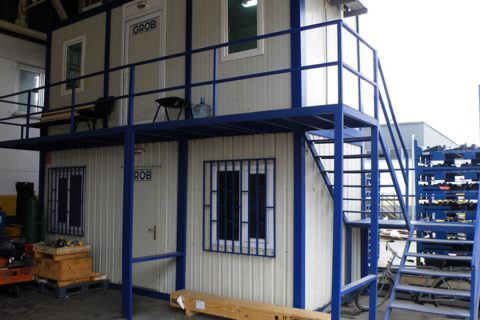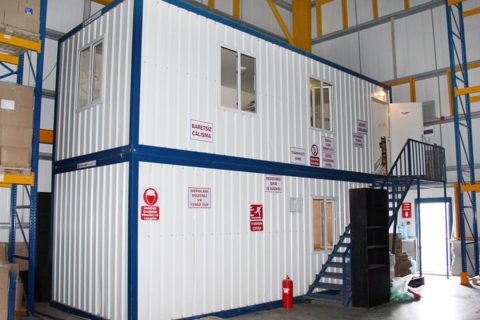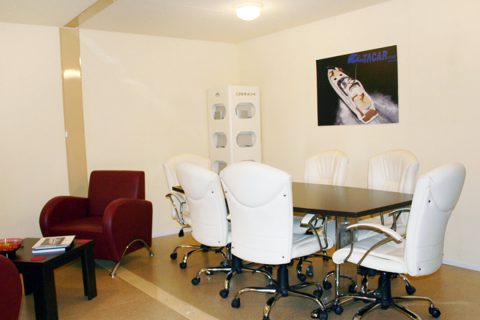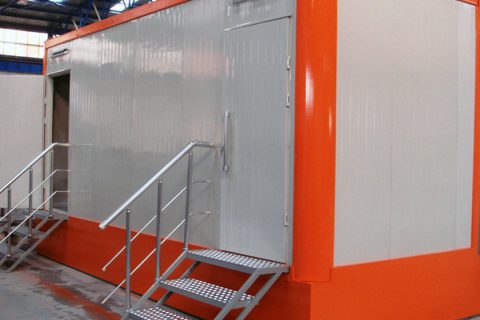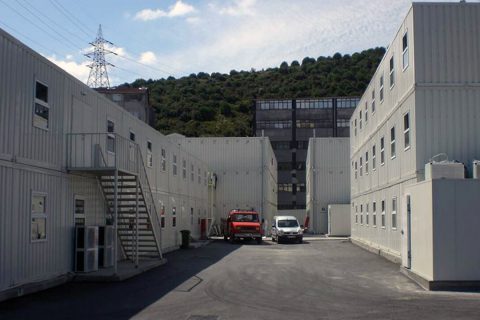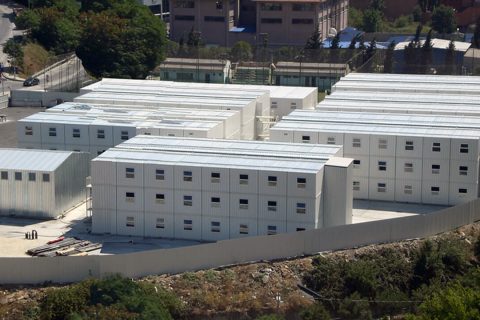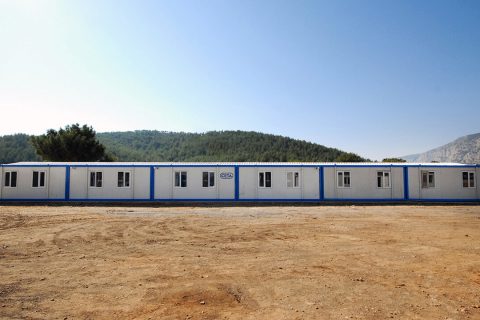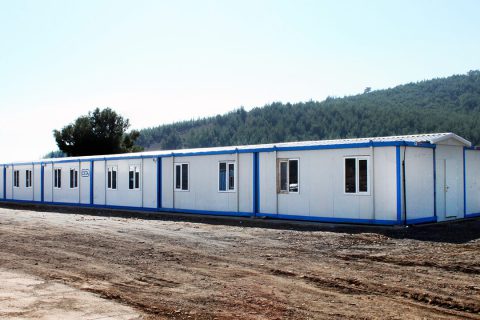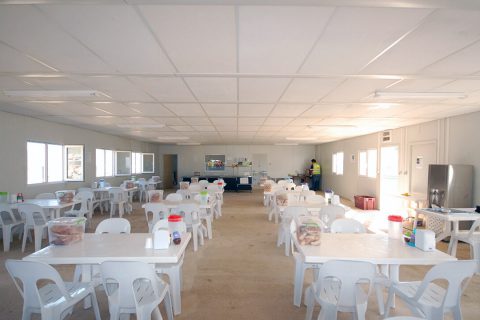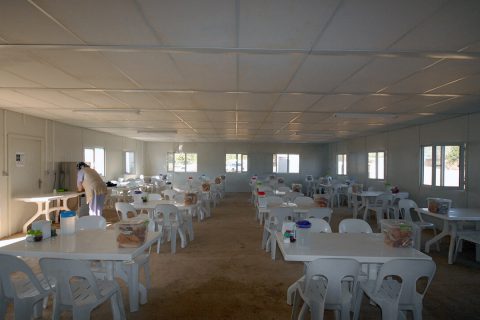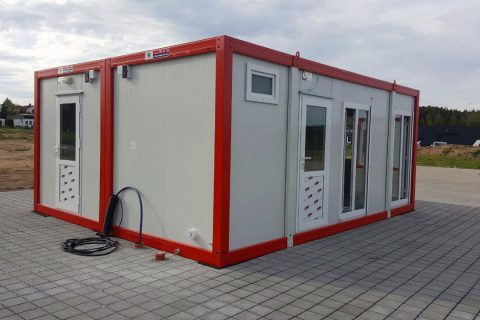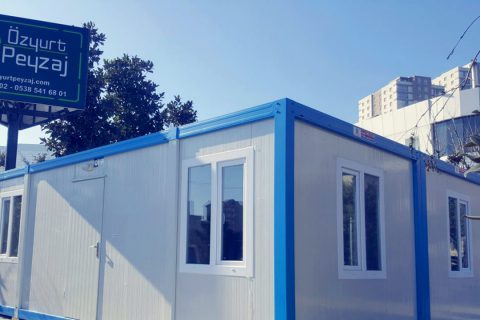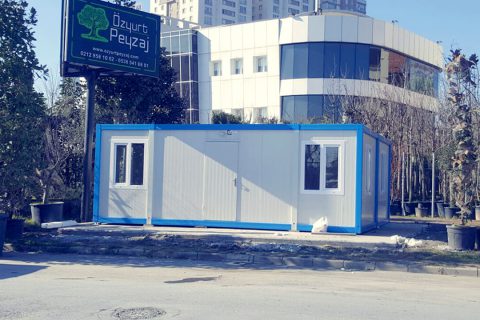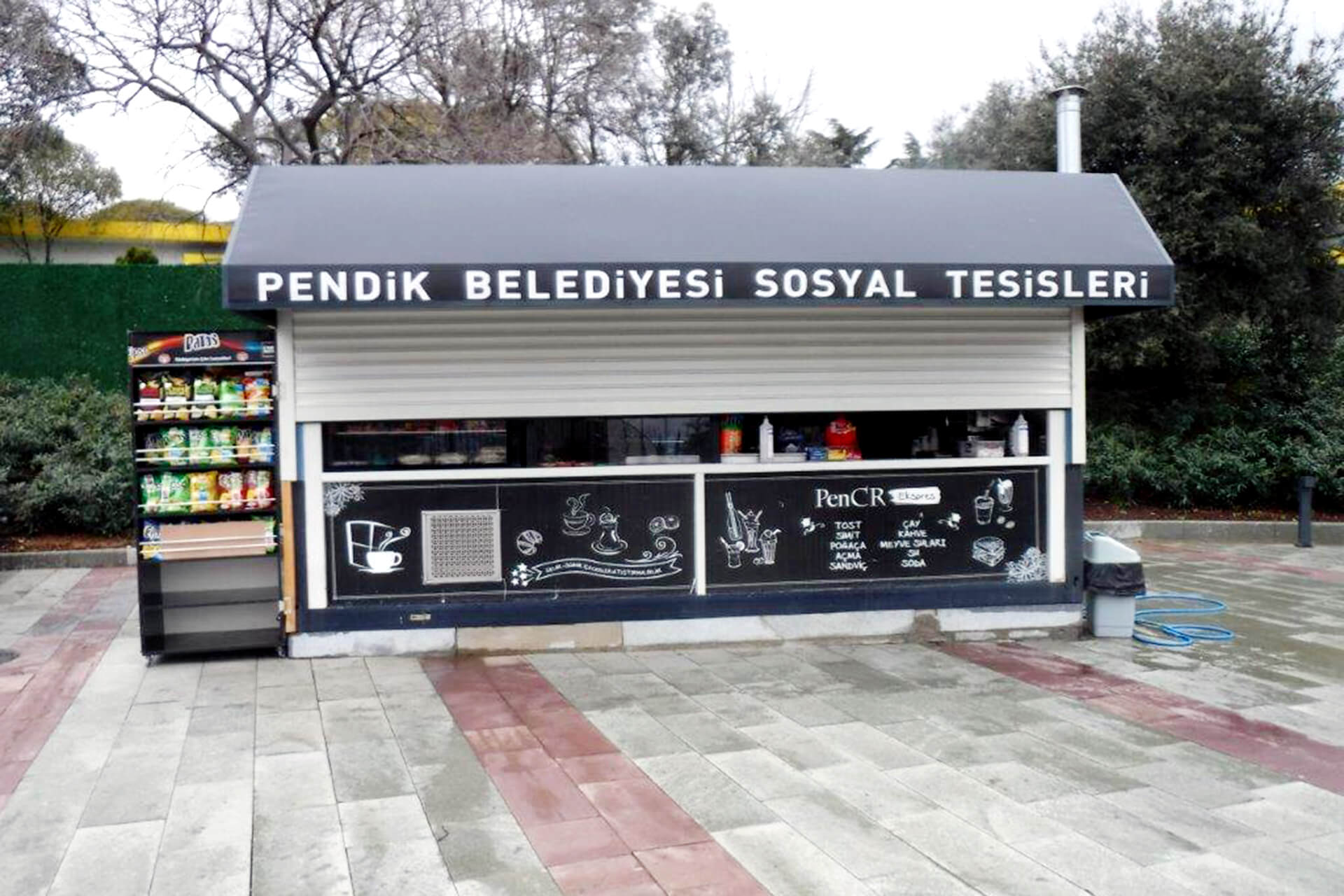Container - Product Groups
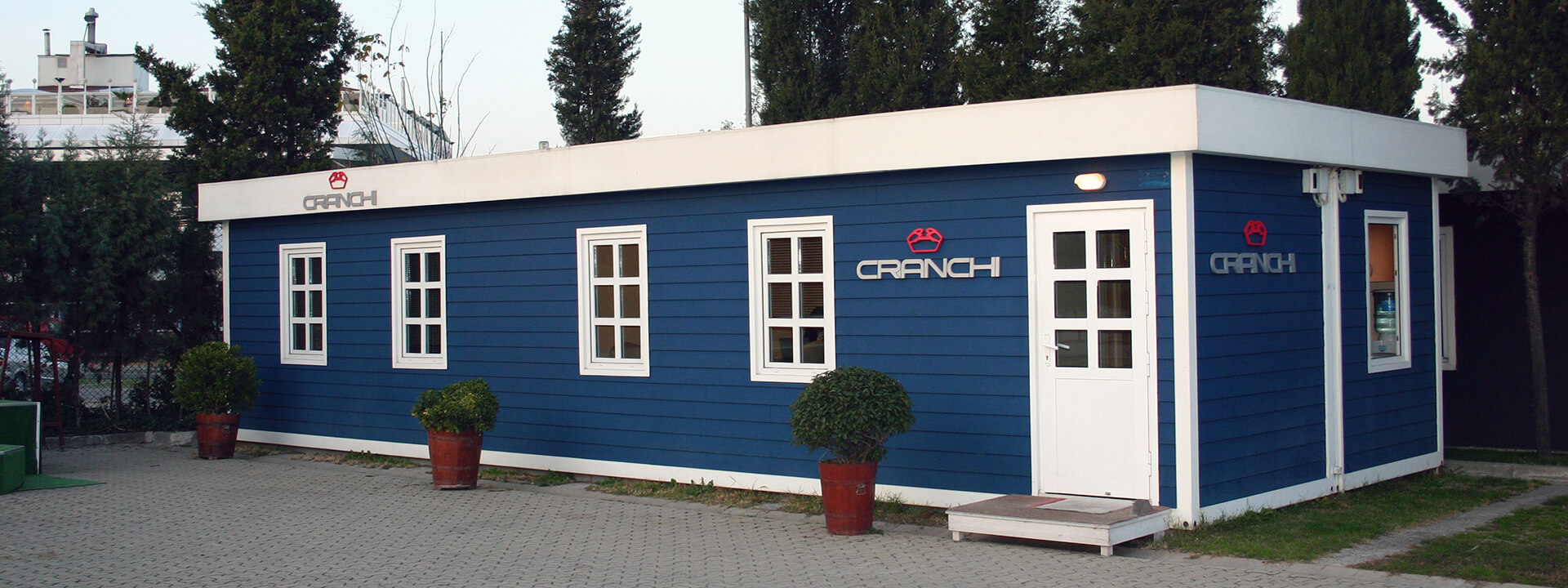
Container Solutions
Containers, being one of the indispensable needs for worksites, are preferred based on all such reasons that they are economic and practical, and can be manufactured both quickly and easily, transported by loading on to a trailer whenever necessary, and insulated according to the intended climatic conditions. Our monthly production capa-city, as Özge Yapı, is 6.750 containers and we are delivering them to domestic and international markets. We produce suitable solutions to meet every kind of needs and demands with a strategy that monoblock (single piece) designs are intended generally for domestic market, and flatpack (demountable) designs for international market.
We have alternative solutions to satisfy every requirement. Our containers preferred and used in workers and petroleum camps, military camps and refugee camps, are ready to meet every kind of needs whether it is short-term mobilization or permanent settlement. There is absolutely a container model in Özge Yapı to meet all of such needs as office, cafeteria, WC-shower, dormitories, infirmary, lodgment, mosque, etc. in the worksite area.
Our container products are assembled using only bolts and nuts for joining parts without welding process. We have also modular container alternatives manufactured in various modules in addition to containers that can be used as one-piece. We have stair landing and roof options for the containers which you can use up to three storeys putting them one over the other.
Hekim Flat Pack Container
These containers are solution packages, in particular, employed for the international projects. Flatpack containers made to comply with waterway and highway transportation are pretty advantageous for shipment. Ten units of 2.40*6.00 containers can be put in a single trailer. Our flatpack containers that can be easily assembled in place are shipped to more than 70 countries.
Frequently Asked Questions About Container
- How is Container Spelled?
The term originates from English language, and spelled as “konteyner” in Turkish.
- What Does Container Mean?
The term “container” means; storage, depot, bin; and is a unit used for transportation, storage or processing purposes. Transportation containers are preferred for logistics purposes. Lide containers are different from logistic ones, and they are used particularly at construction sites as office, dining hall, domitory, wc and shower, prayer room, infirmary, social recreation room. In addition to construction sites, life containers, which are transportable and have low cost, can be designed to suit many sectors. It can be produced as mono-block, flatpack or disassembled depending on preference and transportation means.
- What can be Laid Under Container?
Since container is a solid unit, the ground must be level. Installing the unit on a level ground is also important for proper opening and closing of windows and doors. Solid models or joined containers which will be used for long periods must be placed on a concrete floor. Containers that are fixed on concrete floor using inserts will be robust and steady. However, depending on the needs, containers can be installed on profile, metal legs, wooden purlins, concrete paving, cube shaped concrete legs.
- How Much Is the Fine for Placing Container in the Field?
Containers can be used as housing units in addition to their use on construction site. Containers installed at construction sites are considered as temporary acommodation units, and they are removed and transported elsewhere after completion of the project. Thus, they do not require a license. However, status of the containers that are used as housing unit is not clearly identified. These units have their own dedicated chassis, and are transportable. Containers that are not fixed on concrete and maintained on trailer are not considered as real estate. However, it is important to review regulations, and consult with local municipality about placing container on a field.
- How Are Containers Made?
Containers are produced at factory and are portable, and they are designed according to domestic and foreign markets. They are produced as mono-block, flatpack or disassembled forms in different sizes based on customer needs, and packed according to transportation mean. Bottom and upper chasis, corner poles and lifting lugs of these structures are made of galvanized steel, and walls & roofs are made of sandwich panel.
- How Should Container Ground Be?
Container placement ground must be durable and level because these units are lighter than concrete structures. Inclined or roguh surface may jeopardize container stability. However, legs that are suitable for the ground can be fitted to those structures.
- What Material is Used for Container Siding?
Interior and exterior walls of containers that produced using sanwich panels are made of sheet metal. Standard wall thickness vary between 50 mm to 100 mm. However, insulation material and thickness can be selected depending on the needs. EPS, Polyurethane, rock wool, PIR and PUR can be used as insulation material.
- How to Apply for Electricity Utility for Container?
Construction site electricity can be directly connected to the containers at construction sites. However, application must be filed to electricity distribution administration to connect electric to the structures located at places such as field, land and gardens. An electrical enginner can be consulted for the physical connection.
- How Much Do Containers Cost?
Container prices depend on additional materials used for insulation and container size.
- What Type of Paint is Used on Containers?
Containers which are made of sandwich panel are originally produced as painted. However, lugs, corner poles and chassis can be painted using oil paint to suit desired color preference.
- How Much Do Container Houses Cost?
Container houses are produced in different sizes, therefore the price depends on the size.
- How Are Containers Installed?
Installation of containers begins with their placement on the ground. If the structure is designed to be joined to each other or two-storey, an installation team is sent to erection location. Containers are then fixed to each other using speciel fixings. If the structure is two-storey, stairs and stairhead are installed. Furthermore, a roof structure can be installed as an option.
- How Are Containers Loaded?
Manufactured containers are loaded on vehicles using a crane. Likewise, a crane is used for unloading. Container should be level during transportation, and must be lifted and put down using dobule ropes. If the container is to be sent abroad, they are packed for marine or motorway transportation. Materials to be shipped via marine transportation are loaded on transportation containers. Materials to be shipped via motorway are loaded on trucks using crane or forklift.
- What Materials Are the Containers Made From?
All upper and lower chassis, corner poles and lifting lugs of the containers are made of galvanized steel, walls and roofs are made of sandwich panel. Galvanized steel is a special material obtained by coating standard steel for better resistance against corrosion. This material makes containers to have better resistant against climate conditions, corrosion and wear, allowing sound use of containers for longer periods.
- What Is It Like Inside the Containers?
Container interior and exterior walls are made of sandwich panel. Sandwich panels are resistant against climate. They also provide thermal and sound insulation.
- How Are The Containers Produced?
Özge Yapı containers are manufactured at the factory using robust glavanized steel and sandwich panel. Additionally, structures are delivered to customers in monoblock or disassembled form. Installation support can be offered by specialized teams where applicable.
- How Is Thermal Insulation of Container Ensured?
Thermal insulation can be made by increasing container wall thickness. Additionally, a roof can be installed depending on the demand. Also EPS, polyurethane, rock woool materials can be used, PIR and PUR insulation can be provided.
- How Do I Get Container House License?
Although containers that are not fixed on concrete and transported on trailer are not considered as real estate, local municipality for the area where the container is to be placed should be consulted, if the structure is going to be used as a housing unit. Regulations may depend for each municipality.
- How Are Roofs Installed on Containers?
If you chose a joined type container in particular and you will be using this structure in a region with heavy snow fall, we recommend installation of a roof. Glavanized sheets formed in C and U shapes are used in roof truss and stands. Additionally, galvanized sheet or sandwich panel can be used as roofing material. Roof fascia can be reinforced using match boarding or fibercement coating. Gutters or valleys can be added where necessary. Furthermore, roof trusses can be extended to add a veranda. Container roof installation is performed on-site by professional teams.
- How to Join Two Containers?
Two containers are connected to each other using special fixtures and covers. In general, connections are made using bolts without welding work. Column beam reinforcement can be added inside the structure, if deemed statically necessary by the installation team. Container can be uninstalled for transportation if necessary.
- How Is The Container Floor Made?
Container chassis is made of special, high-density galvanized sheet formed into C and U cross-sectional shape. Chassis is then coated using 16-18 mm thick fibercement. Fibercement is a durable but light-weight cement based material. Fibercement material is finished usind decorativ floor coating before delivery to the customer. If heavy goods to be placed on container floor, it can be covered using diamond embossed sheet. The flooring can also be reinforced by compressing and increasing thickness of chassis sub-systems.
- How Are Containers Transported?
They can be shipped via marine or motorway transportation means depending on the size. If to be shipped via marine transportation, they are loaded on transportation containers. If to be shipped via motorway, they are loaded on trucks. Cranes are used to load and unload containers.
- How to Make Electricity Connection
Construction site electricity can be easily connected to the containers at construction sites. However, electricity distribution administration must be consulted to connect electric if the container is to be used as housing unit.

Technical Specifications of Container
Technical specification for container with Hekim panel.
Asking Price Form
Please fill the form below without missing area.
